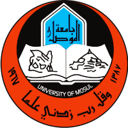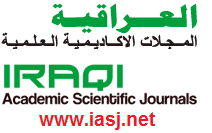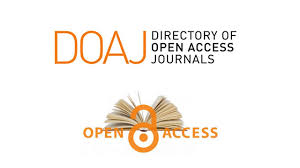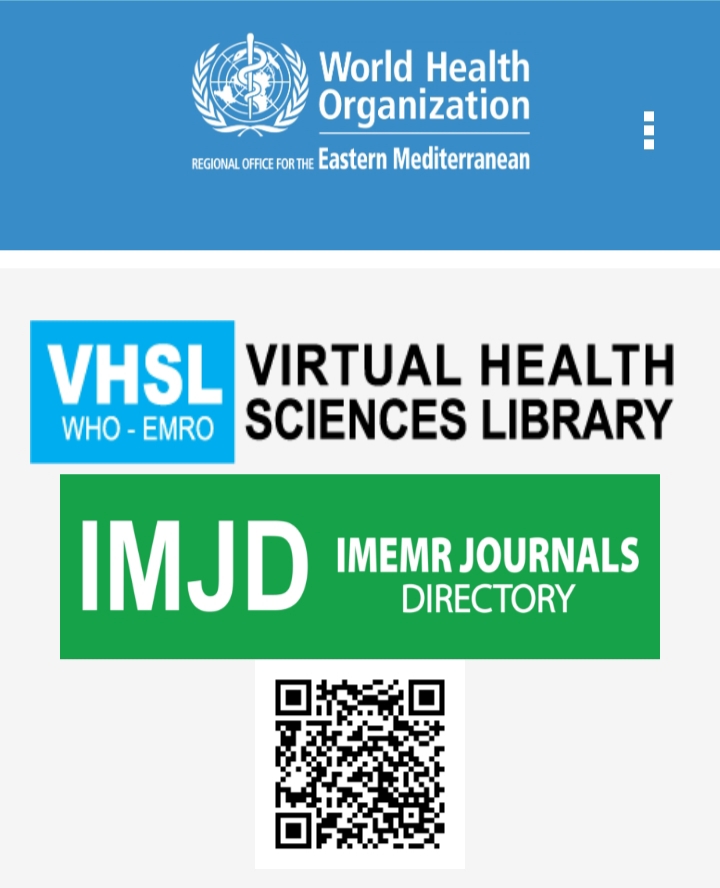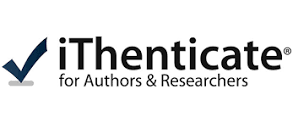Publication Ethics
Publication Ethics of the Al-Rafidain Dental Journal
The ethical policy of RDENTJ is based on the Committee on Publication Ethics (COPE) guidelines and complies with the RDENTJ Editorial Board's codes of conduct. Readers, authors, reviewers, and editors should follow these ethical policies when working with RDENTJ. The ethical policy of RDENTJ is liable to determine which of the typical research papers or articles submitted to the journal should be published in the concerned issue. For information on this matter in publishing and ethical guidelines, please visit http://publicationethics.org.
To maintain high ethical standards of publication of quality science, the publisher strives to work closely at all times with journal editors, authors, and peer reviewers. The essentials of Al-Rafidain Dental Journal publishing ethics for all groups involved in the publishing process are as follows:
Duties and Responsibilities of Publishers
- RDENTJ is committing to ensure that editorial decisions on manuscript submissions are final.
- RDENTJ is promising to ensure that the decision on manuscript submissions is only made based on professional judgment and will not be affected by any commercial interests.
- RDENTJ is committed to maintaining the integrity of academic and research records.
- RDENTJ monitors the ethics of the Editor-in-Chief, Associate Editors, Editorial Board Members, Reviewers, Authors, and Readers.
- RDENTJ is always checking the plagiarism and fraudulent data issues in the submitted manuscript.
- RDENTJ is always willing to publish corrections, clarifications, and retractions involving its publications as and when needed.
Duties and Responsibilities of Editors
- The Editors of the journal should have the full authority to reject/accept a manuscript.
- The Editors of the journal should maintain the confidentiality of submitted manuscripts under review or until they are published.
- The Editor-in-Chief should decide on submitted manuscripts, whether to be published or not, with other editors and reviewers
- The Editors of the journal should preserve the anonymity of reviewers.
- The Editors of the journal should disclose and try to avoid any conflict of interest.
- The Editors of the journal should maintain academic integrity and strive to meet the needs of readers and authors.
- The Editors of the journal should be willing to investigate plagiarism and fraudulent data issues and be willing to publish corrections, clarifications, retractions, and apologies when needed.
- The Editors of the journal should limit themselves only to the intellectual content.
- The Editors of the journal must not disclose any information about submitted manuscripts to anyone other than the corresponding author, reviewers, potential reviewers, other editorial advisers, and the publisher, as appropriate.
-
Timeliness of the Publication Process
The Chief Editors and/or Editors must monitor the turnaround time for each publishing step from manuscript receipt to publication or rejection. They need to ensure the timeliness of publication in each issue. They must track reviewers' and editors' performance, the backlog of accepted manuscripts, and provide prompt responses and decisions for manuscripts.
Unpublished materials disclosed in a submitted paper will not be used by the editor or the members of the editorial board for their own research purposes without the author's explicit written consent.Chief responsibilities
The Chief Editors and/or Editors are responsible for the publication decisions of all manuscripts submitted to the journal. These decisions to accept or reject a paper will be based solely on the validity, originality, and novelty of research works, as well as the relevance of the paper to the scope of the journal. Additionally, Editors should ensure that all published materials are securely archived, and the Publisher will provide the relevant digital support as needed.
- The Chief Editors and/or Editors shall be responsible for evaluating manuscripts fairly and solely on their intellectual merit, ensuring the confidentiality of manuscripts, and have the responsibility to decide when and which articles are to be published.
-
-
Editors with Editorial Board Members
i. Chief Editors should identify qualified editorial board members who can actively contribute to high-standard journal processing and management. Comprehensive and clear guidelines with precise terms of reference should be provided to the editorial board members about their expected roles and duties. Chief Editors and/or Editors should consult the editorial board members about the improvement of the journal's processing and management, challenges, and future directions.
ii. Chief Editors and/or Editors should ensure adequate training and technologies related to the editorial processing are provided to relevant members of the editorial board (including themselves).
iii. The Board Members shall actively contribute to the development and the greater good of the journal and act as ambassadors for the journal. They have to continuously support and promote the journal and also review any work assigned to them.
Duties and Responsibilities of Reviewers
- The Reviewers of the journal should assist the Editors in deciding whether to publish the submitted manuscripts.
- The Reviewers should maintain the confidentiality of the manuscripts that they are invited to review.
- The Reviewers should provide comments in time that will help editors decide on whether the submitted manuscript is to be published or not.
- The Reviewers are bound to treat the manuscript received for peer reviewing as confidential and must not use the information obtained through peer review for personal advantage.
- The Reviewer's comments against each invited manuscript should be technical, professional, and objective.
- The Reviewers should not review manuscripts in which they have found conflicts of interest with any of the authors, companies, or institutions.
- The Reviewers should disclose and try to avoid any conflict of interest.
Duties and Responsibilities of Authors
- Manuscripts must be submitted only in English and should be written according to sound grammar and proper terminology.
- Manuscripts must be submitted with the understanding that they have not been published elsewhere and are not currently under consideration by another journal published by or any other publisher.
- The submitting corresponding author is responsible for ensuring that all the other coauthors have approved the article's publication.
- To sustain the peer review system, authors should participate in the peer review process to evaluate manuscripts from others.
- It is also the author's responsibility to ensure that the manuscripts emanating from a particular institution are submitted with the approval of the necessary institution.
- It is a condition for submission of a manuscript that the authors permit editing of the paper for readability.
- Authors are requested to identify who provided financial support for the conduct of research and/or preparation of the manuscript and briefly describe the role of the founder/ sponsor in any part of the work.
- A copyright release form must be signed by the corresponding author in case of multiple authorship, before the acceptance of the manuscript, by all authors, for publication to be legally responsible towards the Journal's ethics and privacy policy.
- Under open open-access license, authors retain ownership of the copyright for their content but allow anyone to download, reuse, reprint, modify, distribute, and/or copy the content as long as the original authors and source are cited properly.
- All authors have agreed to allow the corresponding author to serve as the correspondent with the editorial office, to review the edited manuscript and proof.
- When the author(s) discover a significant error or inaccuracy in his/her own published work, it is the author’s obligation to promptly notify the journal editor or publisher to retract or correct the manuscript.
- All authors must know that the submitted manuscripts under review or published with RDENTJ are subject to screening using Plagiarism Prevention Software. Plagiarism is a serious violation of publication ethics.
- All authors must ensure that all authors have read the submission final checklist before being submitted to the RDENTJ.
Principles of Transparency
- Peer review process: RDENTJ is a double-blind peer-reviewed electronic and print biannual publication concerned with all aspects of dental sciences, where the identities of both authors and reviewers are concealed from each other. This ensures unbiased evaluation of manuscripts based solely on their academic merit. Reviewers are selected based on their expertise and are expected to provide constructive and objective feedback to help editors make informed decisions on manuscript publication. This process, as well as any policies related to the journal’s peer review procedures, is clearly described on the journal’s website.
- Ownership and management: The College of Dentistry, University of Mosul, Iraq https://uomosul.edu.iq/en/dentistry/, serves as the official publisher of the Al-Rafidain Dental Journal (RDENTJ). Established as a platform for scholarly discourse and research dissemination in the field of dentistry, the journal showcases academic contributions from faculty members, researchers, and students within the college and beyond. With a commitment to advancing dental knowledge and practice, the journal publishes peer-reviewed articles, research papers, case reports, and reviews that address various aspects of dental education, practice, and oral healthcare delivery. Through its publication, the College of Dentistry at the University of Mosul plays a pivotal role in fostering intellectual exchange and promoting excellence in dental scholarship.
- Governing Body: RDENTJ has a strong editorial board, whose members are recognized experts in the subject areas included within the journal’s scope. The full names and affiliations of the journal’s editors are provided on the journal’s website: https://rden.uomosul.edu.iq/journal/editorial.board
- Contact information: The Journal provides the contact information for the editorial office of RDENTJ https://rden.uomosul.edu.iq/journal/contact.us
- Author fees / Access: The Journal database is fully open access, and the full text of published articles is available for everyone who can access the Journal website free of cost. Besides, the authors should pay the article publication fee, which is 100,000 ID.
- Copyright and Licensing: The Al-Rafidain Dental Journal (RDENTJ) follows a copyright policy aligned with the Creative Commons Attribution 4.0 International License.
- Copyright: Journals made clear the type of copyright under which authors' work will be published. Upon acceptance of the manuscript, authors will be asked to complete a "Journal Publishing Agreement".
- Identification of and dealing with allegations of research misconduct: Editor-in-Chief takes reasonable steps to identify and prevent the publication of papers where research misconduct has occurred, including plagiarism, citation manipulation, and data falsification/fabrication, among others.
- Website: A journal’s Website (https://rden.uomosul.edu.iq) states that care has been taken to ensure high ethical and professional standards.
- Name of journal: The name of Al-Rafidain Dental Journal (RDENTJ) is unique and not easily confused with other journals
- Conflicts of interest: Authors are requested to evident whether impending conflicts do or do not exist while submitting their articles to RDENTJ through the Conflict of Interest Disclosure form.
- Data Sharing and Reproducibility: RDENTJ encourages authors to share data and materials related to their research to promote transparency and reproducibility. Authors are encouraged to provide data availability statements in their manuscripts.
- Publishing schedule: The periodicity at which a journal publishes is indicated https://rden.uomosul.edu.iq/browse?_action=issue
- Archiving: A journal’s plan for electronic backup and preservation of access to the journal content is indicated. https://rden.uomosul.edu.iq/page_215.html
Authorship
Authorship is a system for attributing credit and liability for the content of published works. Recognition and accountability cannot be separated. Providing an accurate account of the events is the guiding concept for establishing authorship. The authorship criteria apply to all types of intellectual activity, including printed and digital releases of text, data, and images. Additionally, authorship implies accountability and responsibility for published works. Authors have published authors who have made significant intellectual contributions. Authorized authors are aware of their guilt and obligation to publish content. These criteria reduce substantial ambiguity regarding contributions but do not address the requisite quantity and quality of assistance for authorship.
CRITERIA FOR AUTHORSHIP
Everyone who made significant intellectual contributions to the study underpinning the article (such as to the research question, design, analysis, interpretation, and written description) should be listed as an author. Only those who have made significant contributions to knowledge should be considered authors. Although these contributions may be acknowledged in the publication, providing technical services, translating text, identifying patients for the study, delivering materials, and providing funding or administrative oversight of the facilities where the work was performed do not constitute authorship. One author (a "guarantee") should be accountable for the whole work's integrity. This is usually the corresponding author who submits the work and gets evaluations, although other authors may also serve in this capacity. All writers must approve the final version of the text. Every author should be familiar with every facet of the work. However, current research is often conducted in teams with complementary skills, so not all authors may be conversant in every part of the study. Consequently, the contributions of certain writers may be limited to particular areas of the whole book.
NUMBER, NAMES ORDER, and AUTHORS DISPUTES
The Al-Rafidain Dent J editorial board did not restrict the number of authors for each submitted manuscript, either one or multiple authors; in many cases, the manuscripts with multiple authors give these manuscripts a strong scientific and literature structure, especially when authors share these ideas from different scientific or academic institutions. In such cases, an "author contribution" paragraph should be included when not all authors share equally in all experiment stages, result recording, data explanation, and final manuscript approval. If multiple authors were shared in one manuscript, all of them should pass the minimal requirements of authorship criteria, as explained previously; in addition, editor in chief can ask for more details about authorship contribution and explanation to be a part of the manuscript's authors if the editor in chief feel any kind or nepotism, the editor in chief can omit their names in the final accepted copy of the submitted manuscript. In addition, the writers should determine the sequence in which the authors' names appear. No one else comprehends their contributions and agreements as well as they do. If the authors have not disclosed the method for assigning an authorship order, readers cannot know and should not assume the importance of the authorship order.
Ideally, authorship disputes should be settled locally before the journal peer review process starts; in special cases, the editor-in-chief may help to overcome these disputes. Suppose there are any changes in the authorship order or omission of authorship. In that case, these changes should be supported by a written request by all original authors at the different stages of the manuscript peer review process, acceptance, and publishing.
Changes to authorship
Authors are expected to consider carefully the list and order of authors before submitting their manuscript and provide the definitive list of authors at the time of the original submission. Any addition, deletion, or rearrangement of author names in the authorship list should be made only before the manuscript has been accepted and only if approved by the journal Editor. To request such a change, the Editor must receive the following from the corresponding author: (a) the reason for the change in the author list and (b) written confirmation (e-mail, letter) from all authors that they agree with the addition, removal, or rearrangement. In the case of the addition or removal of authors, this includes confirmation from the author being added or removed.
Only in exceptional circumstances will the Editor consider the addition, deletion, or rearrangement of authors after the manuscript has been accepted. While the Editor considers the request, publication of the manuscript will be suspended. If the manuscript has already been published in an online issue, any requests approved by the Editor will result in a corrigendum. AUTHORSHIP FORM: Click here
Violation of Publication Ethics
- Plagiarism: Plagiarism is intentionally using someone else’s ideas or other original material as if they are one's own. Copying even one sentence from someone else’s manuscript, or even one of your own that has previously been published, without proper citation, is considered by RDENTJ Journals as plagiarism. All manuscripts under review or published with RDENTJ are subject to screening using plagiarism-prevention software. Thus, plagiarism is a serious violation of publication ethics. The development of CrossCheck is a service that helps editors to verify the originality of papers. CrossCheck is powered by the iThenticate software from iParadigms, known in the academic community as a provider of Turnitin.
- Data Fabrication and Falsification: Data fabrication and falsification mean the researcher did not really carry out the study but made up data or results and recorded or reported the fabricated information. Data falsification means the researcher did the experiment but manipulated, changed, or omitted data or results from the research findings.
- Simultaneous Submission: Simultaneous submission occurs when a manuscript (or substantial sections from a manuscript) is submitted to a journal when it is already under consideration by another journal.
- Duplicate Publication: Duplicate publication occurs when two or more papers, without full cross-referencing, share essentially the same hypotheses, data, discussion points, and conclusions.
- Redundant Publications: Redundant publications involve the inappropriate division of study outcomes into several articles, most often consequent to the desire to plump academic vitae.
- Improper Author Contribution or Attribution: All listed authors must have made a significant scientific contribution to the research in the manuscript and approved all its claims. Don’t forget to list everyone who made a significant scientific contribution, including students and laboratory technicians.
- Citation Manipulation: Citation Manipulation includes excessive citations in the submitted manuscript that do not contribute to the scholarly content of the article and have been included solely to increase citations to a given author’s work or to articles published in a particular journal. This leads to misrepresenting the importance of the specific work and journal in which it appears, and is thus a form of scientific misconduct.
- Sanctions: If there are documented violations of any of the above-mentioned policies in any journal, regardless of whether or not the violations occurred in a journal, the following sanctions will be applied: (i) Immediate rejection of the infringing manuscript, (ii)Immediate rejection of every other manuscript submitted to any journal published by any of the authors of the infringing manuscript, (iii) Prohibition will be imposed for a minimum of 36 months against all of the authors for any new submissions to any journal, either individually or in combination with other authors of the infringing manuscript, and (iv) Prohibition against all of the authors from serving on the Editorial Board of any journal.
Handling Cases of Misconduct
Once RDENTJ confirms a violation against RDENTJ publication ethics, RDENTJ addresses ethical concerns diligently, following an issue-specific standard practice as summarized below.
- The first action of the journal Editor is to inform the Editorial Office of RDENTJ by supplying copies of the relevant material and a draft letter to the corresponding author, asking for an explanation in a nonjudgmental manner.
- If the author’s explanation is unacceptable and it seems that serious unethical conduct has taken place, the matter is referred to the Publication Committee via the Editorial Office. After deliberation, the Committee will decide whether the case is sufficiently serious to warrant a ban on future submissions.
- If the infraction is less severe, the Editor, upon the advice of the Publication Committee, sends the author a letter of reprimand and reminds the author of RDENTJ publication policies; if the manuscript has been published, the Editor may request the author to publish an apology in the journal to correct the record.
- Notification will be sent to the corresponding author, and any work by the author responsible for the violation or any work these persons coauthored that is under review by the RDENTJ journal will be rejected immediately.
- The authors are prohibited from serving on the RDENTJ editorial board and serving as a reviewer for the RDENTJ Journal. RDENTJ reserves the right to take more action.
- In extreme cases, notifications will be sent to the affiliations of the authors, and the authors will be prohibited from submitting their work to RDENTJ for 5 years.
- In serious cases of fraud that result in the retraction of the article, a retraction notice will be published in the journal and will be linked to the article in the online version. The online version will also be marked “retracted” with the retraction date.
